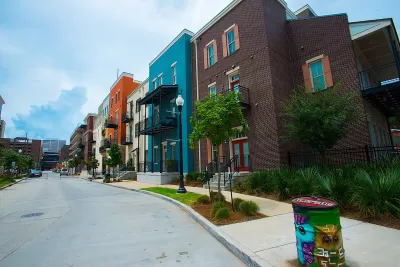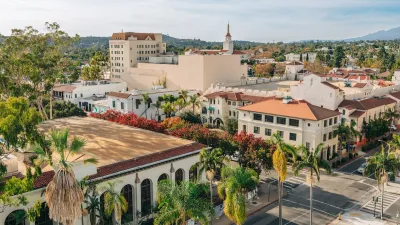For such a commonly used term, “affordable housing” means a lot of different things to different people and in different contexts.For such a commonly used term, “affordable housing” means a lot of different things to different people and in different contexts.

The term "affordable housing" gets tossed around frequently in policy discussions and development debates, but its meaning is far from simple. A new Shelterforce explainer breaks down this complex term, offering crucial context for planners, policymakers, and community development practitioners.
At its most basic, housing affordability hinges on a simple concept: after paying for housing, do residents have enough left for other basic needs? While this sounds straightforward, measuring it proves complex. The industry standard — the 30 percent rule — suggests housing costs should consume no more than 30 percent of household income. Yet this benchmark, while useful for middle-income households, breaks down at both extremes of the income spectrum.
The complexity deepens when examining specific affordable housing initiatives. Projects labeled as "affordable" can target vastly different income levels and populations, from extremely low-income supportive housing to moderate-income workforce developments. Programs like the Low Income Housing Tax Credit typically serve households making 40 to 60 percent of area median income, while Section 8 vouchers reach even lower-income residents. Meanwhile, what counts as affordable in high-cost coastal cities might align with market rates in other regions.
Understanding these nuances is crucial for planners, policymakers, and advocates working to address the housing crisis. Effective housing policy requires moving beyond simple labels to examine who exactly is being served, how affordability is achieved, and how long it will last.
FULL STORY: What Is ‘Affordable Housing’?

Trump Administration Could Effectively End Housing Voucher Program
Federal officials are eyeing major cuts to the Section 8 program that helps millions of low-income households pay rent.

Planetizen Federal Action Tracker
A weekly monitor of how Trump’s orders and actions are impacting planners and planning in America.

The 120 Year Old Tiny Home Villages That Sheltered San Francisco’s Earthquake Refugees
More than a century ago, San Francisco mobilized to house thousands of residents displaced by the 1906 earthquake. Could their strategy offer a model for the present?

HSR Reaches Key Settlement in Northern California City
The state’s high-speed rail authority reached an agreement with Millbrae, a key city on the train’s proposed route to San Francisco.

Washington State Legislature Passes Parking Reform Bill
A bill that would limit parking requirements for new developments is headed to the governor’s desk.

Missouri Law Would Ban Protections for Housing Voucher Users
A state law seeks to overturn source-of-income discrimination bans passed by several Missouri cities.
Urban Design for Planners 1: Software Tools
This six-course series explores essential urban design concepts using open source software and equips planners with the tools they need to participate fully in the urban design process.
Planning for Universal Design
Learn the tools for implementing Universal Design in planning regulations.
Ada County Highway District
Clanton & Associates, Inc.
Jessamine County Fiscal Court
Institute for Housing and Urban Development Studies (IHS)
City of Grandview
Harvard GSD Executive Education
Toledo-Lucas County Plan Commissions
Salt Lake City
NYU Wagner Graduate School of Public Service





























